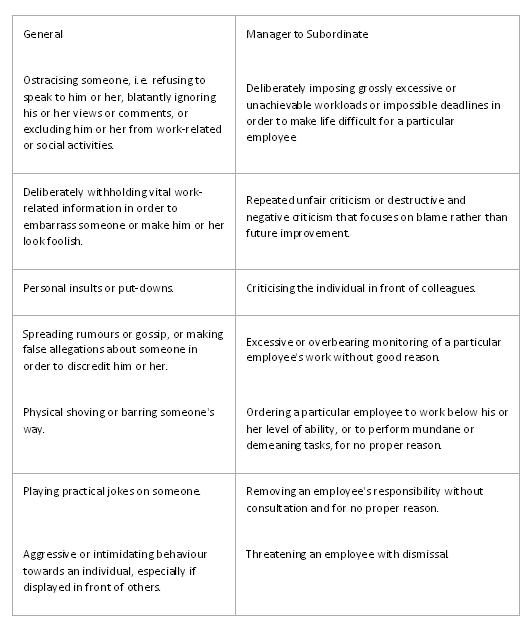It is not uncommon, during disciplinary proceedings, for the employee in question to go off sick, whether at the start of the investigation of the charge or during the process itself. The key is for you, their employer, to manage the situation carefully, to avoid any suggestion that you are acting unfairly. At the same time you need to keep the disciplinary process intact until it reaches a conclusion.
If an employee goes off sick either when they are first informed of the disciplinary charge, or at any point during the investigation, you should continue with the investigation as far as possible, in their absence. This means that you should interview and take statements from any other witnesses to the disciplinary matter, before memories start to fade. The investigation should be completed in all respects, except for any enquiries that need to be made of the employee in question.
Seeking Medical Advice
Where the employee’s sickness absence is due to a minor or short-term condition, such as a cold or flu, this is unlikely to cause you any great difficulty. You should just wait for your employee to return to work and continue with the disciplinary process when they are back.
Where the employee’s absence seems likely to be more prolonged, you may want to get confirmation from a medical professional as to whether or not the employee is well enough to take part in a disciplinary process. An employee who is too sick to attend work may be well enough to attend an investigatory meeting or a disciplinary hearing. A medical opinion should be obtained from the employee’s GP, from a company doctor or from an occupational health adviser.
If the employee is likely to be off sick on a long-term basis and is not well enough to undergo any part of the disciplinary process in the meantime, you might have to put the disciplinary proceedings on hold and advise the employee that the matter has been placed on hold pending their recovery.
You can also invite your employee to make written submissions, rather than attending a disciplinary hearing in person, or allow them to nominate a representative to attend the hearing for them.
When is it Fair to Go Ahead?
Factors that will help you to decide whether or not it is fair to proceed with the disciplinary process without the employee include:
- the importance of dealing with the disciplinary matter promptly
- how long the employee has been off sick and whether or not there is any likelihood of a return to work in the near future
- whether or not a long delay in dealing with the matter might be detrimental to other employees.
There is risk involved in holding a disciplinary hearing and dismissing an employee in their absence, when they are off sick, as a tribunal may find that the dismissal is unfair. The tribunal may consider that if the employee had been given the chance to answer the disciplinary charges, they would not have been dismissed.
How Can You Adjust the Normal Procedure?
You can adjust the standard disciplinary procedure by taking any of the measures below, which can help to encourage the employee to attend and take part in the process:
Venue – think about holding the disciplinary hearing at a venue that will reduce the stress caused or to accommodate any physical needs.
Representation – where it appears that the employee’s illness may affect their ability to explain their case, they may be represented in the process by a colleague, union official or someone else approved by you.
Written representations – where the employee has difficulty in explaining their case, you could allow them to rely on written representations.
Documentation – make sure that the employee receives all documentation relating to the disciplinary process well in advance to allow them to prepare fully, taking into account any effect that the employee’s health may have on their abilities.
Timings – matters should be dealt with promptly, but you can allow extra time for any stage of the process, including the duration of a disciplinary hearing and the need to take appropriate breaks.
The Legal Issues
The priority in handling any disciplinary process is to give your employee a fair hearing. The only way of absolutely guaranteeing this, is for the employee to attend and participate in a full disciplinary hearing.
It is therefore best if you can make every effort to adjust the process so that your employee is able to take part. Only when all the other options have been considered, should you conduct the hearing in the employee’s absence. The following principles of natural justice must be followed:
- the employee must know what they have been accused of
- the employee must be allowed to state their side of the case
- you must give fair and impartial consideration to the employee’s side of the story.
Finally, the opportunity to appeal is even more important where the employee has been denied the opportunity to attend a disciplinary hearing in the first place. A full appeal hearing can ‘cure’ any unfairness in the disciplinary hearing itself, so it is in your interests for a full appeal hearing to take place if possible.
Handling disciplinary procedures can be tricky at the best of times. They are only made harder if the employee in question goes off sick during the process. As an employer, you need to make doubly sure that you follow your company procedure for the fair treatment of your employees. If you’re in any doubt about how to handle a disciplinary procedure, please contact me for some advice first. You can call me on 0118 940 3032 or email sueferguson@optionshr.co.uk.


